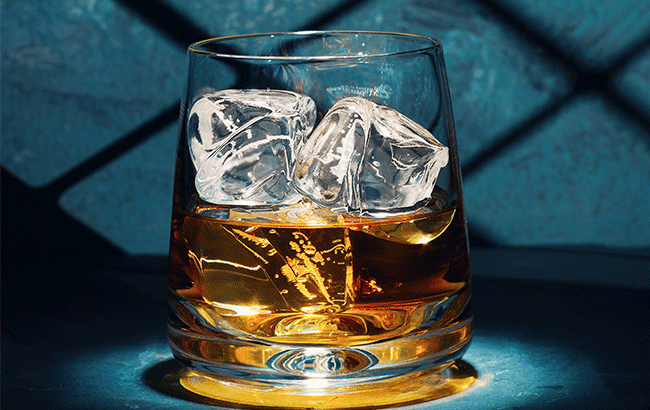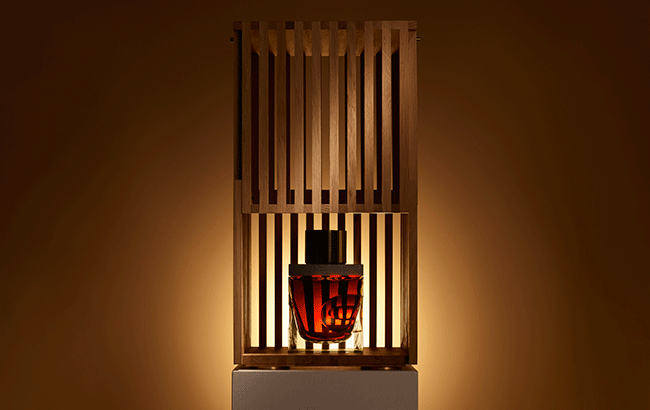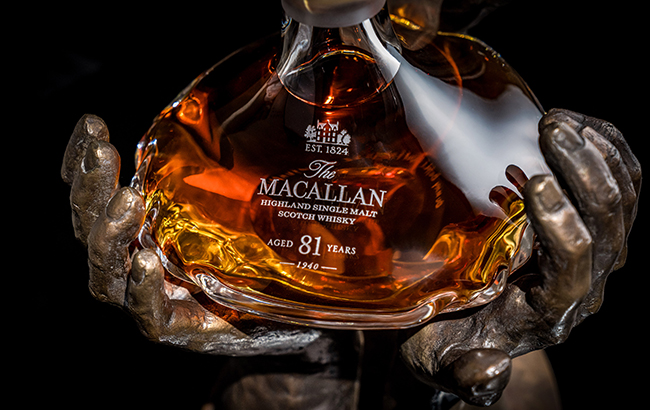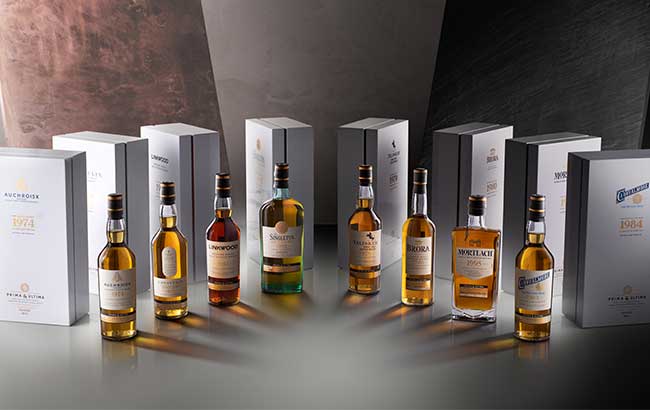Inside the world of ultra-rare Scotch whisky
The past few years have seen an increasing number of eye-wateringly expensive and old Scotch whiskies hit the market. What effect is this having on the sector?

*This feature was originally published in the December 2021 issue of The Spirits Business magazine.
When cask number 340 was filled at The Glenlivet distillery in February 1940, virtually all Scotch whisky disappeared into blends to be bottled and drunk within a decade. That should have been its fate, to be another drop in the ocean of the drink’s post‐war boom. Instead, the cask slumbered in the depths of Gordon & MacPhail’s Speyside warehouse for 80 years before emerging as the oldest Scotch whisky ever released. After the first decanter was knocked down for HK1.5 million (£143,488) at a charity auction in Hong Kong in October, the price for the remaining 249 decanters was set at £80,000 (US$107,000).
“I’m not sure how much it is seen as Scotch whisky,” says David King, Gordon & MacPhail’s sales director. “I think it’s seen as an object of desire.” Whatever the perception, this rarefied end of the whisky market appears to be on fire. The 80‐year‐old Glenlivet is the latest in the firm’s Generations line, following its release of a 75‐year‐old Mortlach for £20,000 in 2015.
That fourfold increase cannot simply be blamed on being a few years older, or on inflation – or, indeed, anything that might tether it to the real world.
A new world
As for how the price is worked out, “there’s no authoritative answer because this is a new world for everybody”, says King. “The honest answer is: it’s what the market will pay. The insight I would offer is that it’s not about the expense of the bottle, it’s about how many people are interested in it. What we’ve found is that if you get a really avid collector the price is almost irrelevant.”
Collectors, investors and high‐end consumers form a three‐legged stool to support this market, and if ever the whisky becomes too expensive to drink there is a risk the stool will collapse. That said, the three players may well be the same person who will try and acquire two bottles, one to keep and maybe sell later, and the other to sip and share.

This last point was brought home to David King in Las Vegas, where he was amazed to meet someone who had actually tried an earlier Generations release. He had apparently got together with other members of a whisky club to buy a bottle.
Such very old whiskies are a race against time, with the strength and volume dropping year by year. The Glenlivet 80‐year‐old was bottled at 44.9% ABV, with loss through evaporation, the angel’s share, contained to just 1% a year. This was due to the thickness of the staves, apparently, and presumably to the cold, dank place in the warehouse where the cask lay.
Andy Simpson, co‐founder of analyst Rare Whisky 101, says he “would probably put money” on there being a 100‐year‐old whisky one day, although he adds: “I think because the temperature’s rising we are getting more rapid evaporation and maturation.”
You’d imagine that the talk about age might undermine distillers’ efforts to play down the number on the label and promote no‐age-statement whiskies, particularly in travel retail. But Simpson sees no issue, and says: “Older is certainly more valuable, but I don’t think the industry is saying ‘older is better’.”
Macallan’s marketing director, Glen Gribbon agrees, saying: “Obviously the older the bottling the fewer bottles there are, so they’re more desirable and more collectible. But, certainly for what we’re releasing, it’s absolutely not about the age.
“It’s about the quality of the whisky and the stories it allows us to tell about the brand’s legacy and history. If you’re absolutely fixated on the age and that is the story, there’s a danger it lacks any real depth, and therefore, frankly, starts to lose relevance.”
As for quality, well, it clearly matters if the whisky is drunk. “For Macallan, despite how scarce some of our releases are, we know that some of those bottles are going to be opened and shared,” says Geoff Kirk, the brand’s head of private client management.
“It’s a positive pressure as we know they’re not going to sit on the shelf gathering dust.”

Or be stored under bond or in some bank vault never to be seen, like high‐end wines such as Domaine de la Romanée‐Conti, whose bottles are traded, fondled and almost never drunk.
King believes “the stuff has to be visible, otherwise it loses some of the awareness”, to which Kirk adds: “We try to ensure we’ve got a balance between engaging people directly and making the product available in some specialist retail stores and the on‐trade.”
The latter accounts for at least half of all Macallan’s sales, and is especially important in the US where “the bounceback has been truly remarkable”, says Gribbon. “As we get into next year, we certainly expect to be back at the levels of pre‐Covid.”
The wide availability of Macallan raises doubts about its luxury status, according to Simpson. “Anything I can buy at Tesco is not luxury,” he says, provocatively. Not that the brand’s supermarket availability held back the bids at a sale at Sotheby’s in October 2019, when a collector paid £1.5m (US$2m) for a bottle of The Macallan 1926 – a record that stands. Yet that spread of prices from the high street to the auction house is what keeps the brand – and the whole Scotch category – accessible, in Simpson’s view.
In the 1970s single malt whisky was a whole new vice with a tiny fan base, and brands such as Singleton didn’t exist. Undaunted, Diageo recently emptied a cask of Dufftown into 235 bottles of Singleton 54‐year‐old, its oldest expression to date, priced at £28,850.
It is part of the Rare & Exceptional portfolio, whose share of total value is “honestly just a drop in the ocean”, compared with the firm’s core Scotch business, insists James Mackay, Diageo’s head of rare and collectable spirits.
As to the impact on regular Singleton drinkers used to paying £30‐£35 a bottle, he says: “We hope they’d be aware that the brand they trust also releases incredibly unique things in tiny quantities.”
He also looks after the so‐called Prima & Ultima bottlings, “where we’ve decided to focus on the vintage year”, he explains, “because that’s really speaking more to the provenance, and the fact that each of the whiskies is a moment in time rather than a number on the bottle.”

Like Gordon & MacPhail, Diageo occasionally sells the outturn of a cask to wealthy people who are sometimes part of a syndicate. “It can often be a five‐year journey,” says Mackay, describing the period between the initial approach and receiving the final whisky as an official bottling.
While the media seems to relish discussing the investment potential of these expensive bottles and casks, brand owners are a lot more reticent. “There are people that collect for the joy of collecting, and good for them, but encouraging people to invest to make a return is absolutely not the conversation we as a brand want to be having,” says Gribbon.
Healthy scepticism
Kirk adds: “We have seen in recent years the chatter about the returns from cask investments. A lot of it is slightly false data, and we look on it with healthy scepticism.”
It is the same at Diageo. “We’ll never endorse whisky as an investment,” says Mackay, nor will he comment on the secondary market, except to say: “Like the fine wine market it goes up and down, but it doesn’t put the rest of the market or the vast majority of consumers in any danger. It makes for good headlines.”
Yet arguably the auction houses are one of the few barometers of demand available to distillers as they work out a release price that is considered reasonable. Too high and they’ll be accused of having delusions of grandeur. Too low, and bottles will be snapped up and resold in an often contentious practice called flipping, not that Mackay sounds unduly bothered. “Once bottles are sold,” he says, “if they get flipped very quickly for much higher prices, it is what it is.”
Who knows what ancient casks are lurking in Scotland’s whisky warehouses, each edging closer to eclipsing that 80‐year‐old Glenlivet.
But if you can’t wait, Gordon & MacPhail is offering a leather‐lined oak cabinet with 17 bottles of some of the rarest whisky it owns. The collection has been dubbed ‘the ultimate Christmas present’, and if you’ve got a hotline to Santa, it’s only £100,000.
Related news
Golf drives Glen Moray push in UK travel retail
